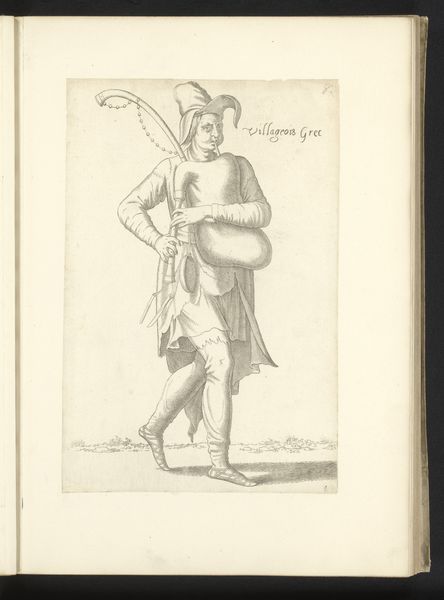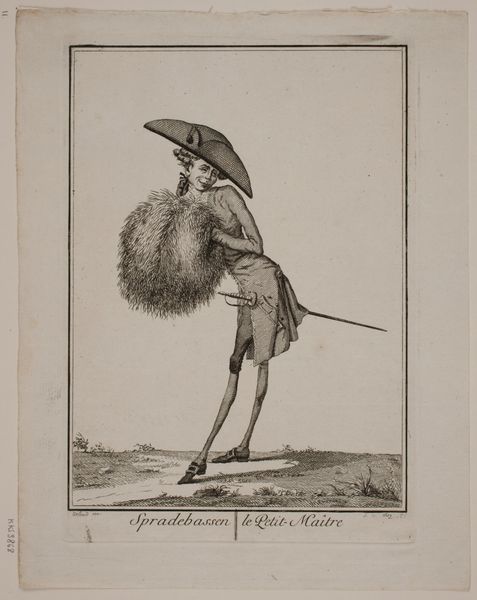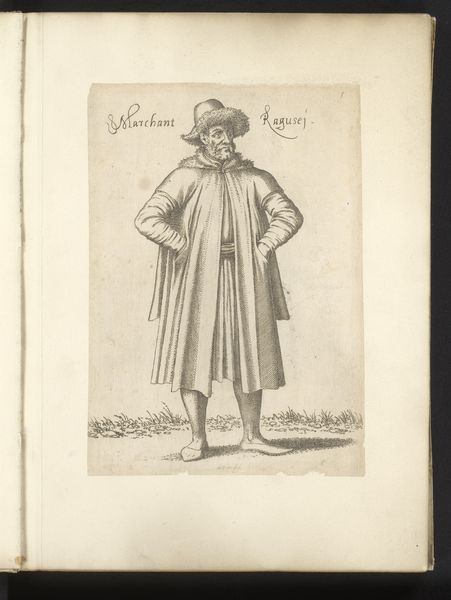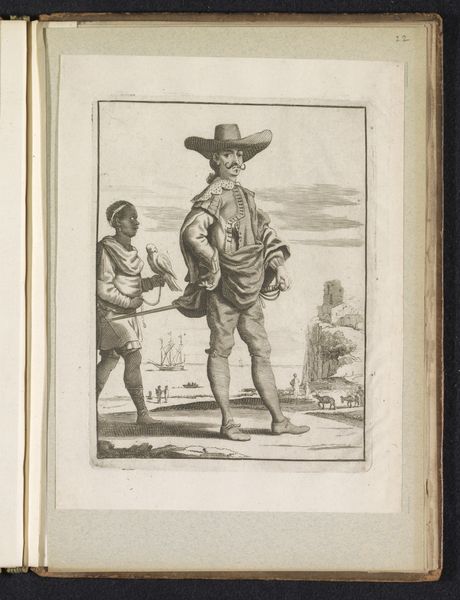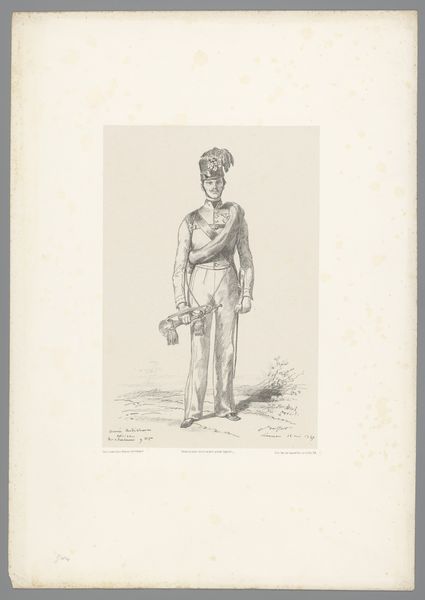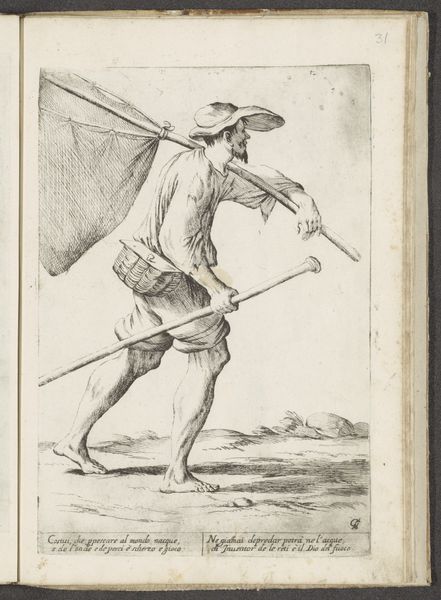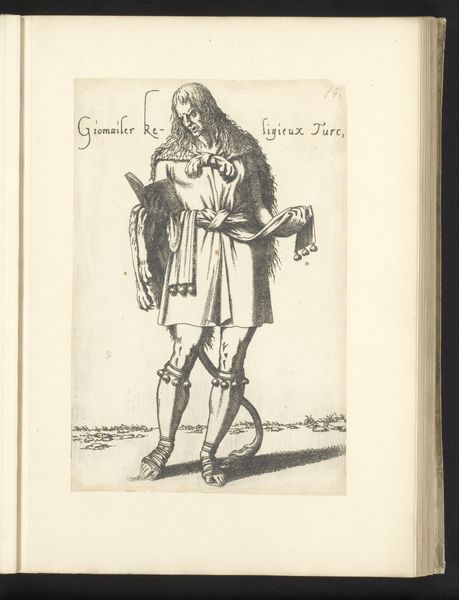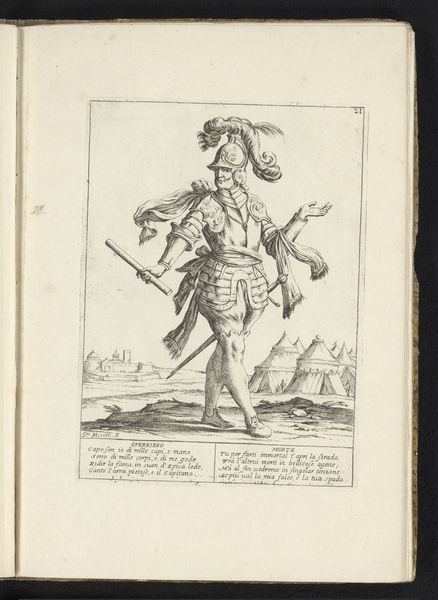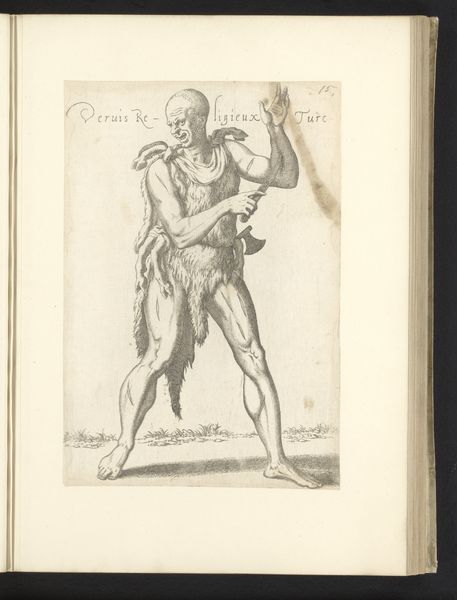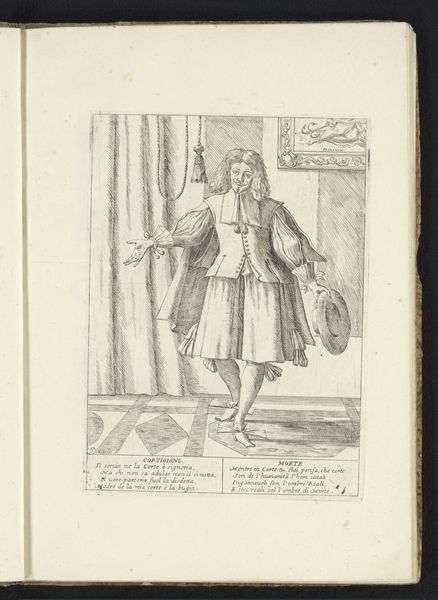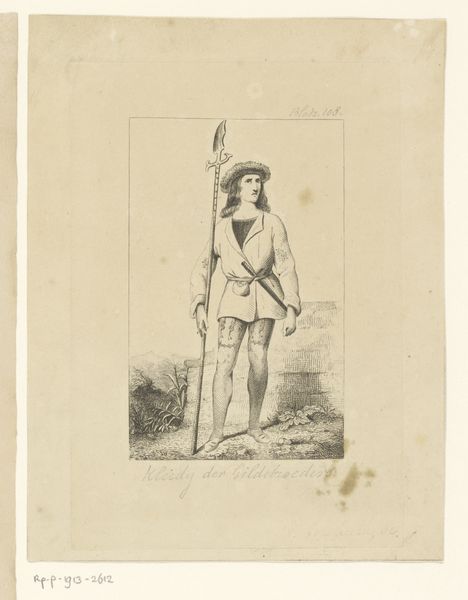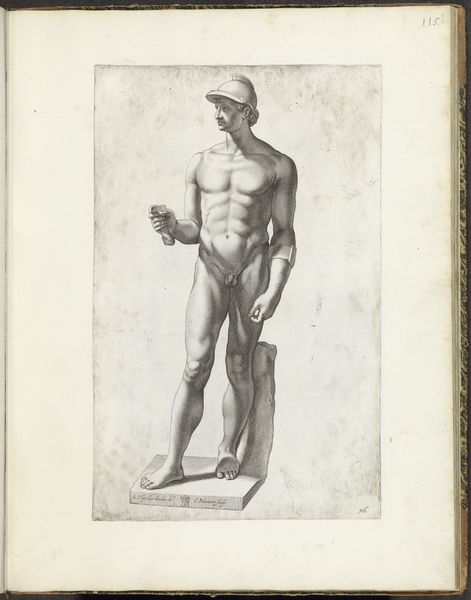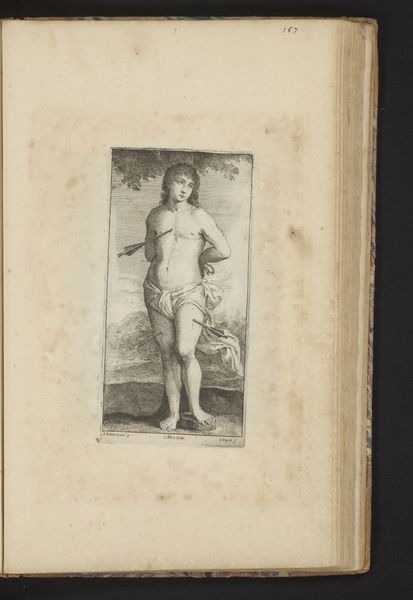
#
ink drawing
#
pen drawing
#
mechanical pen drawing
#
pen illustration
#
old engraving style
#
personal sketchbook
#
ink drawing experimentation
#
pen-ink sketch
#
pen work
#
sketchbook drawing
Dimensions: height 258 mm, width 172 mm
Copyright: Rijks Museum: Open Domain
Léon Davent's "Turkish Dervish of the Calender Order," made around the mid-16th century, presents a figure rendered with stark clarity through line and form. The dervish, clad in minimal attire, engages us with a direct gaze, his presence defined by precise, deliberate strokes. Davent’s technique emphasizes contrasts; the texture of the dervish’s garment versus the smoothness of his skin. The lines create a play of light and shadow that gives depth to the figure. This detailed approach is more than descriptive; it is analytical. The artist dissects the human form and attire into components, examining each part to construct the whole image. This formal construction speaks to a broader intellectual interest in understanding and categorizing the world. The image serves as a study in representation. It invites questions about how we perceive and classify cultures different from our own. The emphasis on detail suggests a desire to capture and comprehend the essence of the subject, reflecting a period of exploration.
Comments
No comments
Be the first to comment and join the conversation on the ultimate creative platform.
